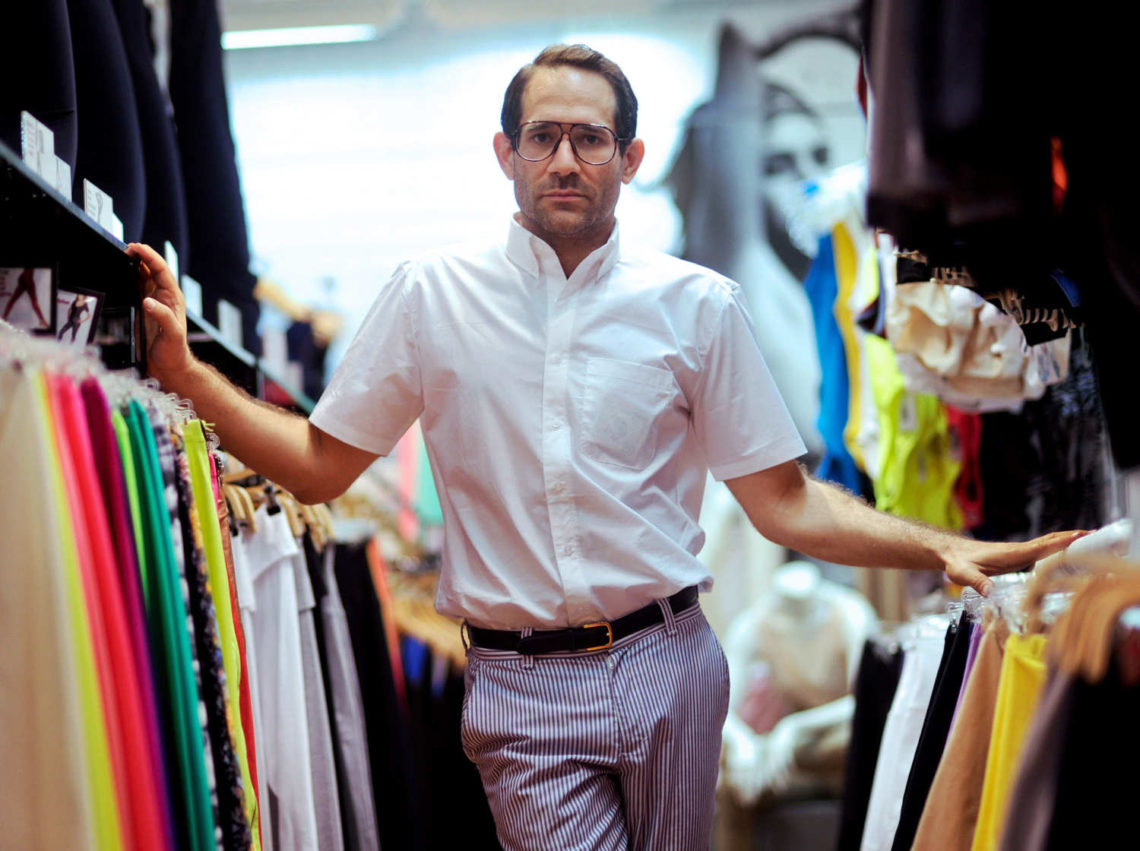American Apparel, the Los Angeles-based clothing manufacturer, figment of Dov Charney’s imagination and entrepreneurial nature, running since 1989, is now indisputably one of the largest apparel manufacturer in North America. At least virtually… A growing rumor, supported among others by Bloomberg, has it that the double A brand would be preparing its second bankruptcy filling within the next few weeks, making it the second one in less than two years. But one shall fully comprehend what American Apparel has been through also by considering the founder’s attitude, Mr.Charney, whose role in the brand’s downturn is not to be ignored. Let’s have a quick remainder of what happened up to now.

Suspended in July 2014 for allegedly missing company funds and letting nude photos of a former female employee be posted on the web after she accused him of sexual harassment, Dov Charney was ousted of his CEO position the following December. After that, the latter filed a defamation lawsuit against AA and more particularly against the company chairwoman Colleen Brown and Standar General, a hedgde fund which loaned him money to increase his stake in the company while ceding voting rights on his own shares, thus creating a highly publicised but not much-needed feud.

Indeed, added to that, American Apparel has been suffering a substantial fall in sales. To cap the losses, the company had announced a massive restrutturation plan to decrease the production costs. Turns out the reduction of costs was more of a suppression, with a considerable amount of shops closing. To some, AA could have considered moving its factories outside of Los Angeles, where labor costs are the highest, but being a US-based manufacturing is crucial to the brand. However, all the undertaken measures were not enough to save the company, as it reported a 17% decline in sales in the second semester of 2015, generating expected losses of $19 million. In October 2015, the verdict was rendered : the company declares bankruptcy for the first time in its history. American Apparel drafts a restructuration plan, seeking $70 million in new capital from creditors and a $90 million bankruptcy loan, as well as reducing its debt from $300 million to $135 million, and decreasing interest expenses by $20 million.
Furthermore, many sponsors like Monarch Alternative Capital, Pentwater Capital or Goldman Sachs got involved in the reorganizing phase and became the new owners of the company. However, as the company turned private, uncertainty about the sales figures lead to even more uncertainty about that plan’s outcome. According to some, as Bloomberg, the efforts didn’t turn out to be rewarding. In February 2016, after finally coming out of bankruptcy, Paula Schneider, AA’s CEO, came up with a new plan to boost sales via a shift in product focus. The company would come back to its early successes and focus on its basic apparel items. Feasible in theory, in practice it turned out that the company failed to carry out the reforms, potentially justifying the existence of a contemporaneous bankruptcy filling.

The recent days have seen American Apparel propelled to the front pages of the news, as it may be heading into bankruptcy once again. What would a second episode of bankruptcy change for the casual fashion brand? According to some analysts, it would allow the new buyer of AA to get rid of $10 million of liabilities, exiting leases on at least 200 under-performing stores and shut a sizable portion of its operations. Nonetheless, the matter being confidential, none of these information are confirmed yet, and the early-stage discussions will not forcibly result into a deal nor a sale.
American Apparel will be much heard of in the next few weeks, just a year after the New York Stock Exchange suspended the company’s trading. Some buyers have already expressed great interest in the company’s wholesale operations and brand image. Pending the confirmation of these rumors, you might want to build a stock their high-waist jeans, a renowned classic made in the USA.
by Marie Motti






